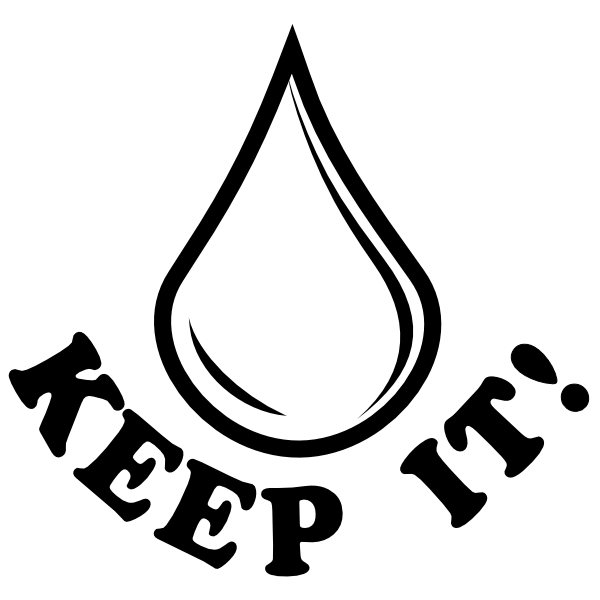June 2022
Topical Medications
The topical use of many of these medications is not an absolute indication to pump and dump. Some medications (particularly if applied to the breast, areola, or nipple) may require certain precautions be taken to decrease the risk of contact transmission, or oral ingestion, to the infant in clinically significant amounts. Please review the subsections below for more details on categories of topical medications.
For more detailed information and references on specific medications, please refer to LactMed, e-lactancia, Infant Risk, or Mother to Baby.
Topical Breastfeeding Products
Topical Breastfeeding Products include nipple balms, Lanolin, petroleum jelly, food grade oils (coconut/olive etc.), and all-purpose nipple ointment (APNO). These topical products are generally considered safe in lactation and are not an absolute indication to pump and dump.
- Nipple balms: The ingredients in nipple balms are highly variable based on the product used. Check the specific components of the product being used in the sources noted above. Generally, there is no absolute indication to pump and dump.
- Lanolin: Lanolin may cause dermatitis. Watch closely for any signs of skin irritation and discontinue use if dermatitis develops (1). While use should be discontinued if dermatitis develops, there is no absolute indication to pump and dump.
- Petroleum products (petroleum jelly): It is not immediately unsafe for the infant to ingest petroleum-based products, but long-term exposure to unpurified products may cause significant exposure to certain hydrocarbon compounds that have been found to be carcinogenic. If you are using petroleum-based products (such as petroleum jelly), it is best to use white petroleum jelly (which has been purified to remove the hydrocarbons) and wipe this product off prior to breastfeeding or pumping (2, 3, 4). While white petroleum jelly should be used due to the possible risk of exposure to carcinogenic hydrocarbons in unpurified products, there is no absolute indication to pump and dump.
- All-purpose nipple ointment (APNO): APNO is a combination cream that includes a topical steroid, an antibiotic, and an antifungal. This combination is typically unnecessary for nipple pathology and studies show no benefit to this combination for nipple pain. There is no absolute indication to pump and dump.
Topical Corticosteroids
An attempt should be made to use the lowest effective potency of steroid possible (1, 5). The most potent steroids used on large areas may cause systemic effects in the lactating individual, but there is a low chance that there will be significant transfer to or systemic effects in the breastfed infant (5). There is no absolute indication to pump and dump with the use of topical corticosteroids (hydrocortisone, betamethasone, triamcinolone, etc.).
Topical Antifungals
Common topical antifungals include nystatin, amphotericin B, clotrimazole, miconazole, ketoconazole, ciclopirox, terbinafine, selenium sulfide, gentian violet. Some of these medications are not orally absorbed and most are thoroughly metabolized by the liver (1, 5). There is no absolute indication to pump and dump with the use of these medications, although ketoconazole and gentian violet should be avoided when possible for the reasons noted below.
- Ketoconazole: This medication can be potentially hepatotoxic, therefore an alternative should be considered (5).
- Gentian violet: This medication should be used as a last resort as there are much safer alternatives. It can cause dermatitis and tattooing of the skin for the lactating individual and may result in ulceration of the infant’s oral mucosa (5).
Topical Antimicrobials
The topical use of antimicrobials (iodine, povidone-iodine, chlorhexidine, bacitracin, neomycin, polymyxin, B, clindamycin, erythromycin, benzoyl peroxide, tetracyclines, metronidazole) is generally not an absolute indication to pump and dump (1, 5). For more information on topical acne antimicrobials, please see the section on Acne Medications.
- Topical iodine and povidone-iodine: These medications should be used with caution. The concentration of iodine in these medications can be high enough, even when used in small quantities, to increase the concentration of iodine in breast milk. This increase of iodine can transiently cause hypothyroidism in infants, and if used around the delivery may affect thyroid results on newborn metabolic screening. This applies to topical or vaginal application (ex: surgical prep, iodine containing tampons, douches). Therefore, these medications should be used with caution and an attempt should be made to use the lowest possible concentration of iodine, apply on the smallest area possible, not use on open wounds, avoid use when possible, or use an alternative like chlorhexidine (5).
Topical Antivirals
There is no absolute indication to pump and dump with the topical use of antivirals (liquid nitrogen for warts, acyclovir/Zovirax, penciclovir/Denavir, docosanol/Abreva) (1, 6, 7).
Local Anesthetics/Topical Pain Medications
There is no absolute indication to pump and dump with the topical or local use of anesthetics and pain medications (lidocaine, epinephrine, NSAIDs/Voltaren/Diclofenac) (1). For more information, see the sections on Anesthesia and Pain Medications.
Topical Antineoplastics
Topical antineoplastics include imiquimod/Aldara, fluorouracil/Carac/Fluoroplex/Efudex, Ingenol mebutate/Picato. Due to the nature of these medications, precautions should be taken to avoid application of to the breast or nipple, if possible, and ensure that the infant’s skin does not come into direct contact with areas that have been treated. However, as long as the infant does not directly contact the areas where these medications are applied, there is no absolute indication to pump and dump.
Topical Insecticides & Repellants
Topical insecticides and repellents include permethrin, pyrethrin, ivermectin, lindane, malathion, spinosad, sulfur (5-10%) +petroleum, DEET, icaridin, IR 3535, lemon eucalyptus oil. Many of these medications can be found as environmental contaminants and can be present in breast milk naturally (5). There is no absolute indication to pump and dump except for lindane, which appears to be unsafe during lactation.
- Lindane: An alternative to lindane should be used while breastfeeding as its topical use in mothers can increase breastmilk levels for several days and may be toxic to the infant. It can also cause estrogenic effects such as negatively affecting breastmilk production (5). The use of this medication IS an indication to pump and dump.
Topical & Injectable Cosmetics
There is no absolute indication to pump and dump with the topical or local use of these medications (1) although special considerations exist for hydroquinone as noted below.
- Androgenic Alopecia: Rogaine/minoxidil
- Botox/botulinum toxin A
- Skin Lightening (hydroquinone, bensalazide/Benoquin)
- Hydroquinone: While long term use of this substance is not recommended due to unknown risks to the infant, there is no absolute indication to pump and dump with short-term topical use of hydroquinone. Consider using Bensalazide as a possible alternative (1, 8).
- Hair Dyes/Products (bleaches, dyes, straighteners): There is no absolute indication to pump and dump with the topical use of these products (1).
Topical Psoriasis Treatments
- Calcineurin Inhibitors (pimecrolimus, tacrolimus): There is no absolute indication to pump and dump with the topical use of these medications (9).
- Phototherapy – UV Light: There is no absolute indication to pump and dump with the topical use of this treatment (9).
- UV A light + oral psoralen/Methoxsalen: An alternative regimen should be considered. The use of this topical + oral treatment IS an indication to pump and dump 24 hours after the combination is used to ensure 95% of medication is cleared through mother’s urine (9).
- Vitamin D Analogs (calcipotriene, calcitriol): There is no absolute indication to pump and dump with the topical use of these medications (9).
Topical Coal Tar
Application to the breast should be avoided as skin-to-skin transfer or oral ingestion of coal tar by the infant in clinically significant amounts can cause toxicity. While an alternative should be considered in lactating individuals due to this risk, there is no absolute indication to pump and dump as long as this is not applied directly to the breast and the infant is not ingesting the coal tar (9, 10, 11).
References
- Butler DC, Heller MM, Murase JE. Safety of dermatologic medications in pregnancy and lactation: Part II. Lactation. J Am Acad Dermatol. 2014;70:417.e1–10. quiz 427. doi: 10.1016/j.jaad.2013.09.009. PMID: 24528912.
- Noti A, Grob K, Biedermann M et al. Exposure of babies to C(15)-C(45) mineral paraffins from human milk and breast salves. Regul Toxicol Pharmacol. 2003; 38:317-25. doi: 10.1016/s0273-2300(03)00098-9.
- org. Petrolatum, Petroleum Jelly. https://www.safecosmetics.org/get-the-facts/chemicals-of-concern/petrolatum/ (Accessed June 13 2022).
- National Cancer Institute. Mineral Oils: Untreated and Mildly Treated: https://www.cancer.gov/about-cancer/causes-prevention/risk/substances/mineral-oils. (Accessed June 13 2022).
- Anderson PO. Topical drugs in nursing mothers. Breastfeeding Med. 2018;13:5-7. doi: 10.1089/bfm.2017.0224.
- Berens P, Eglash A, Malloy M, Steube A, and the Academy of Breastfeeding Medicine. ABM Clinical Protocol #26: Persistent Pain with Breastfeeding. Breastfeeding Med. 2016; 11(2): 1-8. doi: 10.1089/bfm.2016.29002.pjb.
- Centers for Disease Control and Prevention. Herpes Simplex Virus (HSV). https://www.cdc.gov/breastfeeding/breastfeeding-special-circumstances/maternal-or-infant-illnesses/herpes.html#:~:text=Mothers%20with%20HSV%20can%20continue%20to%20breastfeed%20if,feed%20expressed%20breast%20milk%20from%20the%20affected%20breast. (Accessed June 13 2022).
- Hydroquinone. At e-lactancia.org Retrieved 23 May, 2022 from https://e-lactancia.org/breastfeeding/hydroquinone/product/. (Accessed June 13 2022).
- Anderson PO. Treating psoriasis during breastfeeding. Breastfeeding Med. 2022;4: 287-289. doi: 10.1089/bfm.2022.0033.
- Coal Tar. At e-lactancia.org Retrieved 23 May 2022 from https://e-lactancia.org/breastfeeding/coal-tar/synonym/. (Accessed June 13 2022).
- Scheepers PTJ, Van Houtum JLM, Anzion RBM, et al. (2009), Uptake of Pyrene in a Breast-Fed Child of a Mother Treated with Coal Tar. Pediatric Dermatology, 26: 184-187. https://doi.org/10.1111/j.1525-1470.2009.00880.x.
- Leachman SA, Reed BR. The use of dermatologic drugs in pregnancy and lactation. Dermatol Clin. 2006;24:167-97. doi: 10.1016/j.det.2006.01.001.

